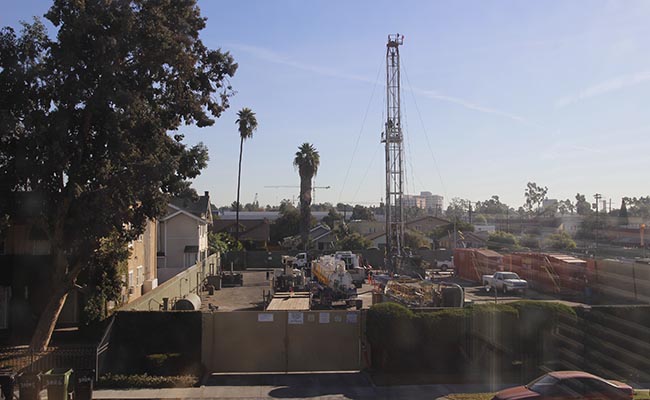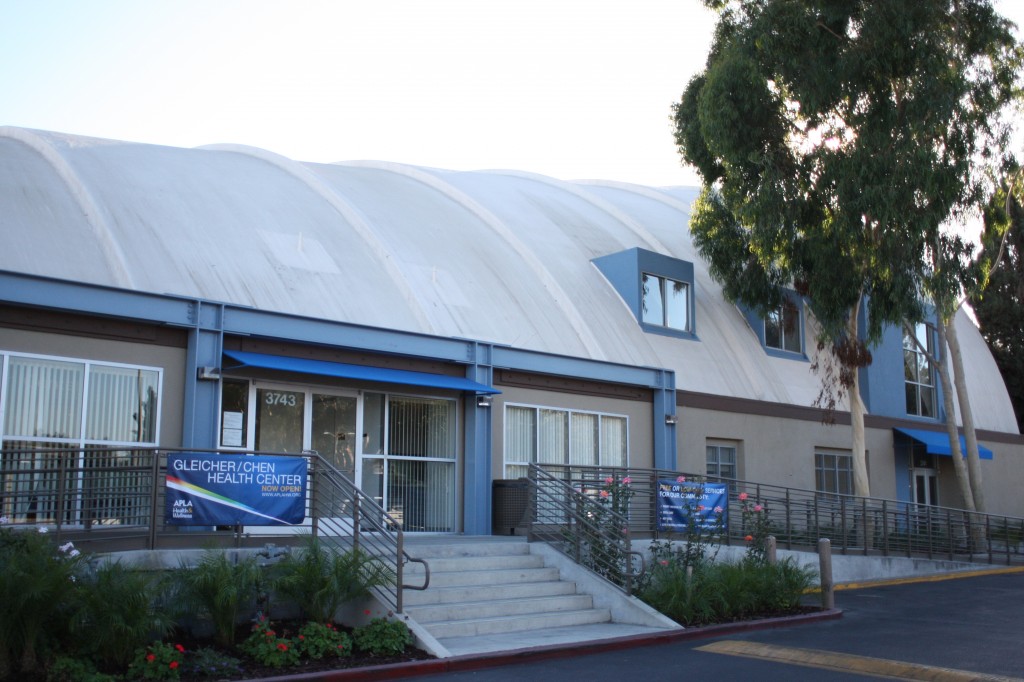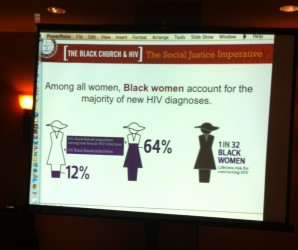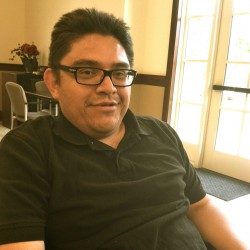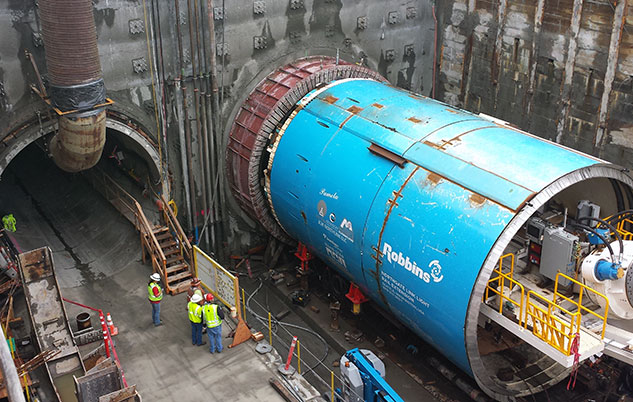
The Crenshaw/LAX line’s twin tunnels will be carved out by a soon-to-be-named tunnel boring machine (TBM) similar to Pamela (pictured in blue), which was used to carve out the Northgate Link Extension in Seattle, WA. | Sound Transit, Flickr Creative Commons.
In keeping with a 700-year-old mining tradition, Metro plans to give a female name to the tunnel boring machine (TBM) that will excavate the twin tunnels for the Crenshaw/LAX line.
But it needs the public’s help.
Metro is requesting public participation in voting to select the LAUSD student-submitted name and artwork to be featured on the machine during an early 2016 lowering ceremony.
Although the TBM has “boring” spelled out in its moniker, the process of keeping with mining history has been anything but. Rather, it’s been a creative process.
LAUSD students in sixth to 12th grades submitted their choice of either a 200-word essay or two-minute video outlining why a suggested name would best suit the 950-pound, 400-foot-long machine.
Additionally, students in kindergarten through fifth grade entered artwork to be featured alongside the winning name.
Representatives from Metro, the office of L.A. County Supervisor and Metro Board Chair Mark Ridley-Thomas, Walsh/Shea Corridor Constructors and staff, and the Crenshaw Community Leadership Council selected the finalists from a pool over more than 200 entries submitted since June.
The top 10 name finalists are Lorena (Lorena Weaver), Sojourner (Sojourner Truth), Maya (Maya Angelou), Eleanor (Eleanor Roosevelt), Harriet (Harriet Tubman), M.A.C. (Make A Change), Sally (Sally Ride), The Africana, Rosa (Rosa Parks), and Athena.
Three student contest winners from each category will be awarded with a $100, $200 or $300 TAP card during the lowering ceremony. Voting for the favorite name and artwork is open now through Dec. 1.
Digging 60 feet per day, it will take a year for the TBM to excavate the 1-mile twin tunnels beginning at the northeast corner of Crenshaw Boulevard and Rodeo Road and will connect the Crenshaw/Expo, Martin Luther King Jr. and Leimert Park underground stations.
The tunnel boring is a part of the construction of the more than $2 billion Crenshaw/LAX light-rail project that will connect the Green and Expo lines. The new route will consist of eight new stations to serve the Crenshaw, Inglewood and LAX communities. It is expected to open in 2019.









